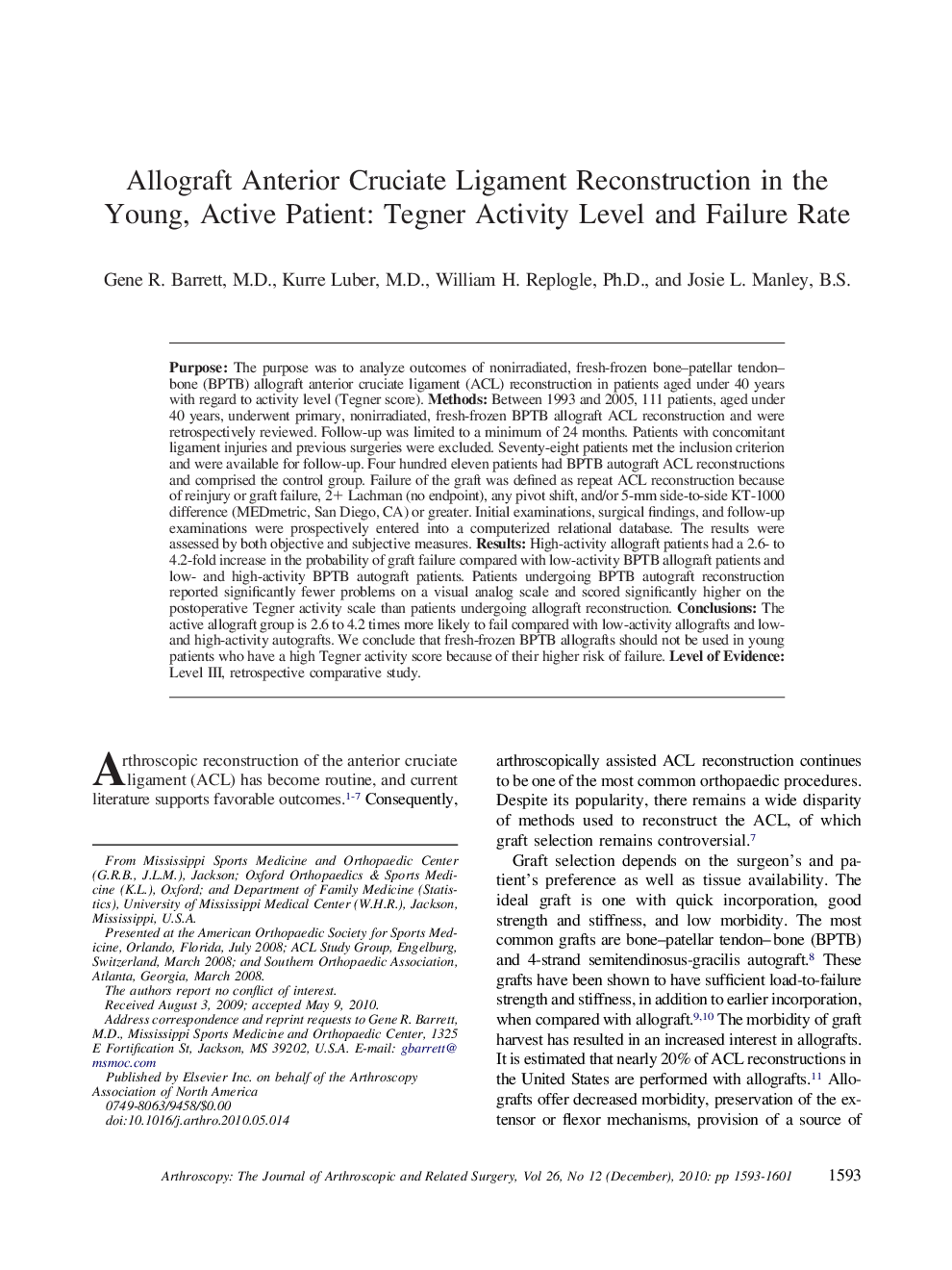| Article ID | Journal | Published Year | Pages | File Type |
|---|---|---|---|---|
| 4046146 | Arthroscopy: The Journal of Arthroscopic & Related Surgery | 2010 | 9 Pages |
PurposeThe purpose was to analyze outcomes of nonirradiated, fresh-frozen bone–patellar tendon–bone (BPTB) allograft anterior cruciate ligament (ACL) reconstruction in patients aged under 40 years with regard to activity level (Tegner score).MethodsBetween 1993 and 2005, 111 patients, aged under 40 years, underwent primary, nonirradiated, fresh-frozen BPTB allograft ACL reconstruction and were retrospectively reviewed. Follow-up was limited to a minimum of 24 months. Patients with concomitant ligament injuries and previous surgeries were excluded. Seventy-eight patients met the inclusion criterion and were available for follow-up. Four hundred eleven patients had BPTB autograft ACL reconstructions and comprised the control group. Failure of the graft was defined as repeat ACL reconstruction because of reinjury or graft failure, 2+ Lachman (no endpoint), any pivot shift, and/or 5-mm side-to-side KT-1000 difference (MEDmetric, San Diego, CA) or greater. Initial examinations, surgical findings, and follow-up examinations were prospectively entered into a computerized relational database. The results were assessed by both objective and subjective measures.ResultsHigh-activity allograft patients had a 2.6- to 4.2-fold increase in the probability of graft failure compared with low-activity BPTB allograft patients and low- and high-activity BPTB autograft patients. Patients undergoing BPTB autograft reconstruction reported significantly fewer problems on a visual analog scale and scored significantly higher on the postoperative Tegner activity scale than patients undergoing allograft reconstruction.ConclusionsThe active allograft group is 2.6 to 4.2 times more likely to fail compared with low-activity allografts and low- and high-activity autografts. We conclude that fresh-frozen BPTB allografts should not be used in young patients who have a high Tegner activity score because of their higher risk of failure.Level of EvidenceLevel III, retrospective comparative study.
